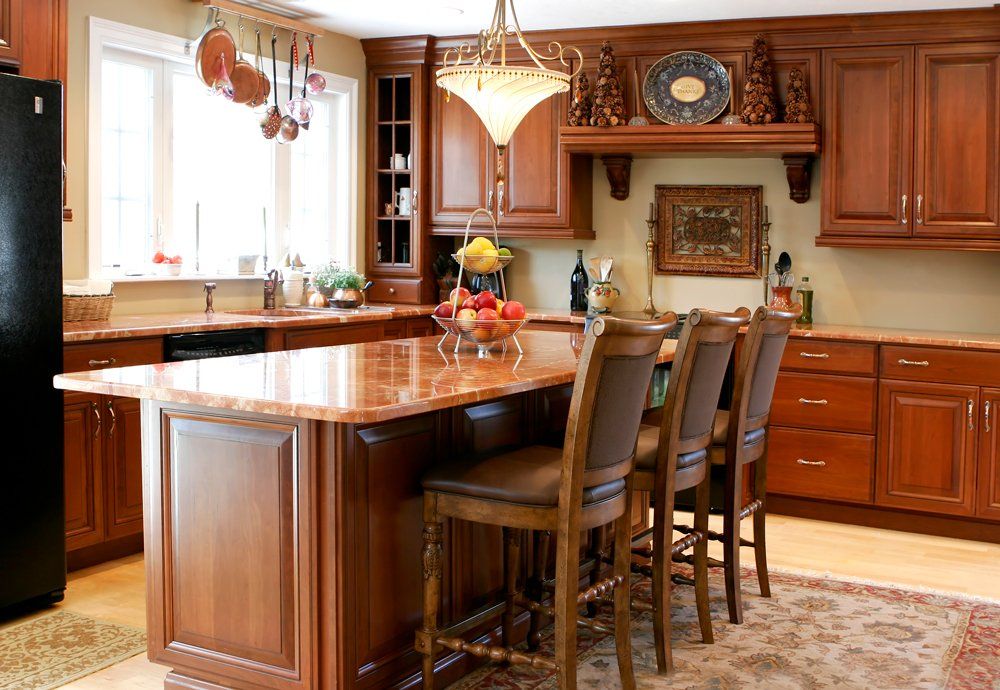What Kitchen Countertop Color Should You Choose?
Countertops are necessary in any kitchen, and you’ll want to choose countertops that reflect the kitchen's value and aesthetic—transforming it into a warm and inviting hub for family and friends. Here is a simple guide to selecting the perfect color combinations for a timeless appeal.
Know Your Color Wheel
To use the color wheel for selecting your kitchen countertops, begin by familiarizing yourself with the basic color wheel. The color wheel consists of primary colors (red, blue, yellow), secondary colors (orange, green, purple), and tertiary colors (a mix of primary and secondary colors).
Next, identify the dominant hues already present in your kitchen, such as wall paint, cabinets, and flooring. Take note of these colors, as they will play a significant role in your color selection.
Once you have identified the dominant hue, you can employ different color schemes from the color wheel. For a striking contrast, choose the color opposite the dominant hue on the color wheel. This complementary scheme can add visual interest to your kitchen countertops.
Alternatively, if you prefer a harmonious look, consider using colors adjacent to the dominant hue on the color wheel. These analogous colors will create a cohesive and pleasing atmosphere.
Another option is the monochromatic scheme, where you use different shades of a single color for your countertops. This approach offers a subtle and sophisticated appearance.
For a more vibrant and balanced look, you can opt for the triadic scheme. This involves selecting three colors that are equally spaced on the color wheel.
To ensure that you make the right choice, purchase small samples of your chosen colors and place them in your kitchen. Observe how they interact with natural and artificial light at various times of the day.
Complement Your Cabinets and Furniture
When selecting colors for your kitchen countertop, you can achieve a complementary look between your countertops, cabinets, and furniture through a series of thoughtful steps. To begin, start by analyzing your current color scheme. Take note of the dominant colors in your cabinets and furniture, as well as any accent hues that stand out.
Next, choose a color palette that harmonizes well with the existing colors of your cabinets and furniture. Select colors that work together cohesively to create a pleasing aesthetic in your kitchen.
As you choose your countertop color, consider the concept of contrast. Strive to strike a balanced contrast between the countertop and your cabinets and furniture. For example, if your cabinets have a dark color, opt for a lighter countertop, and vice versa, to create an appealing balance in the overall look of your kitchen.
Consider Lighting
Assess the amount of natural light the kitchen receives throughout the day. If the kitchen lacks natural light, opt for lighter colors to brighten the space. For kitchens with ample natural light, bolder colors can add warmth and character. Additionally, think about the artificial lighting in the kitchen.
Ensure the countertop colors complement the artificial lighting to create a harmonious atmosphere. Darker countertops may absorb more light, making the kitchen feel dimmer, while lighter countertops can reflect light and enhance brightness.
Plan for Future Changes
Identify your preferred color scheme and choose timeless shades to ensure long-lasting appeal. You may choose neutral tones like beige, gray, or white, as they provide flexibility for future adjustments.
Next, contemplate the overall kitchen design and envision potential alterations in cabinets, flooring, or appliances. Ensure the countertop color complements these elements and remains adaptable to various styles. Additionally, think about your future preferences and lifestyle changes, selecting a color that can accommodate them.
Are you planning to replace your countertops or install new ones? Best Marble & Granite Company can help you with granite and marble countertops. Contact us now for more information.








